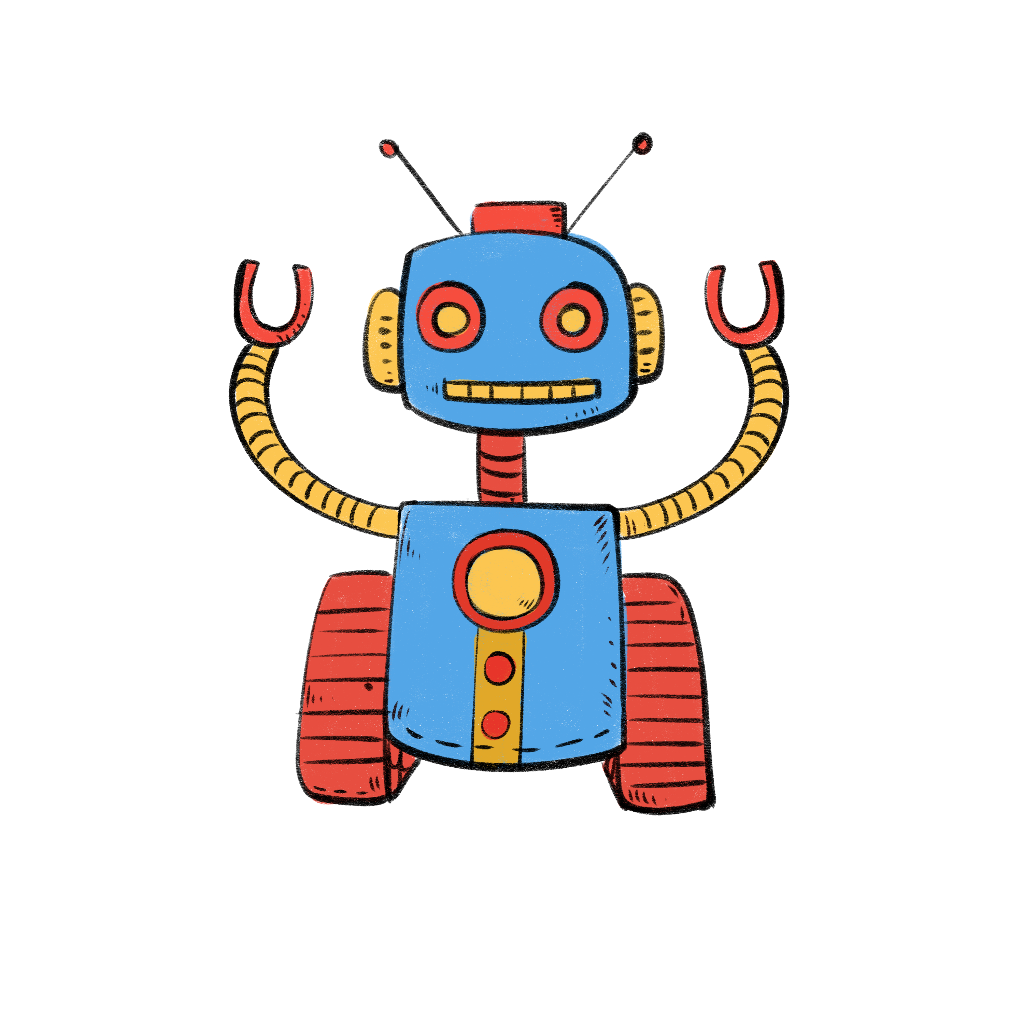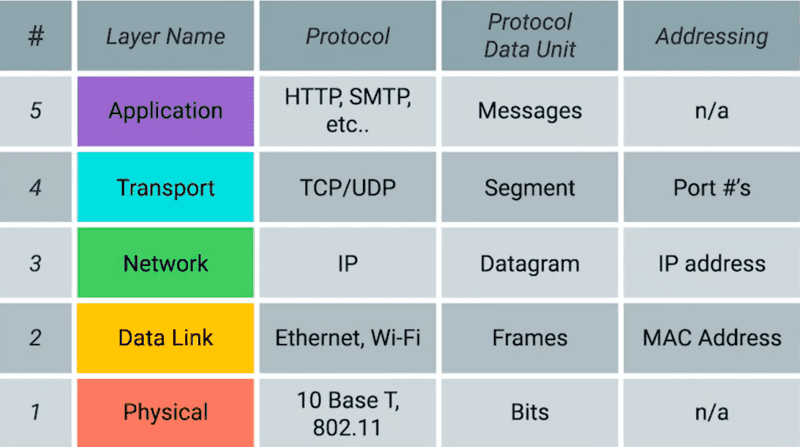The TCP/IP Five-layer Network Model
To properly learn something, we have to start at the beginning. We will be learning one concept at a time, process it, and move to the next.
The goal is consistent learning and absorbing information while feeling engaged and not overwhelmed.
Goal of this article
I will be introducing the TCP/IP Five-layer network model.
We will be discussing every layer in detail in coming articles. So, let's begin.
To understand networking, we need to understand all of the components involved. We're talking about everything from the cables that connect devices to the protocols that these devices use to communicate. The TCP/IP five-layer model helps in explaining how network devices communicate.
The TCP/IP Network Model
I will be taking the bottom -> top approach to explaining the layers.
Physical Layer
- Data is present in Bits.
- It follows the 10 Base T or IEEE 802.11 architecture.
- It represents the physical devices that interconnect computers.
- This includes the specifications for the networking cables, connectors and describing how signals are sent over these connections.
Data-Link Layer
- Data is present in Ethernet Frames.
- The most common standard used here is Ethernet.
- It is responsible for getting data across a single link.
- It is responsible for defining a common way of interpreting the signals(from the physical layer), so network devices can communicate.
Network Layer
- Data is present in Datagrams.
- The most common protocol used here is Internet Protocol(IP).
- It is responsible for getting data delivered across a collection of networks.
- It allows different networks to communicate through routers.
Transport Layer
- Data is present in Segments.
- The most common protocol used here is Transmission Control Protocol(TCP).
- It provides a point-to-point connection between the source host and destination host to deliver the data.
Application Layer
- It is the layer through which users interact.
- There are lots of different protocols at this layer that are application-specific.
You can think of layers like different aspects of package delivery.
- The physical layer is the delivery truck and the roads.
- The data link layer is how the delivery trucks get from one intersection to the next.
- The network layer identifies which roads need to be taken to get from address A to address B.
- The transport layer ensures that the delivery driver knows how to knock on your door to tell you your package has arrived.
- The application layer is the contents of the package itself.
Did you find this post useful?
I would be grateful if you let me know by commenting below. Means a lot to me!
Sign up to get updates when I write something new. No spam ever.




Comments